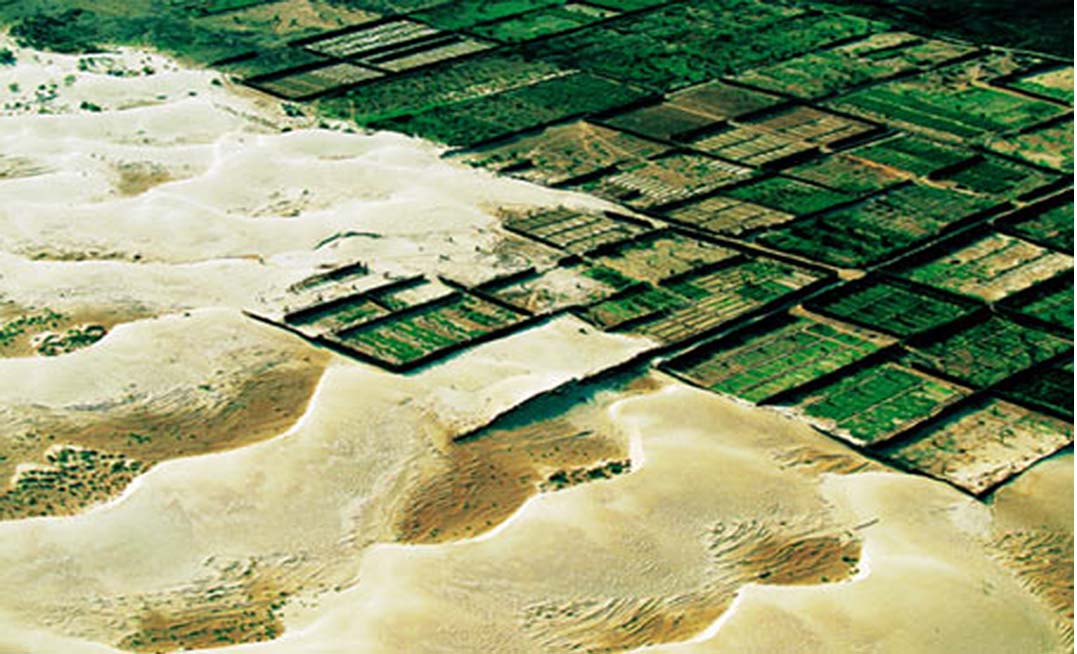 |
| Technique: |
TYPOLOGIES OF OASIS SETTLEMENTS |
| Project: |
Sustainable management of water resources in the Oases of Tunisia's Arid Regions |
| Site: |
Tunisian Oasis, TUNISIA |
|
Location

Click the globe to see the technique on Google Map
|
Continent: Africa
Country: Tunisia
Site: Tunisian Oasis
Coordinates:
Lat.:
33.86
Long.:
7.87 |
Brief introduction
There are three types of oasis in arid Tunisia:
• coastal or maritime oases, situated along the shores of the Mediterranean (Gablès, Kettana, Mareth, Metouia, Oudref and Elhamma);
• mountain oases, situated in gaps or valleys among the mountains, notably in the Gaftsa region (Gafsa, Elguettar, Tameghza);
• desert oases, situated along the borders of the Elgharsa and Elfejej chots. Most of these oases are located in the regions of the Djerid (Tozeur Nefta and Dégache) or of Nefzaoua (Kébili, Souk Elahad, Douz).
Problems, causes and effects
Initially, these oases were irrigated largely by spring waters from shallow aquifers. Such emersions occur naturally along the wide valleys of the wadis or at the edge of the chotts. With time, and after extending the surface of the oases, residents built hydraulic works to augment the water captured from the sub-surface aquifers. They drilled shallow wells (2 to 6 meters deep) where water could be drawn by animals or by counterpoise lift (shaduf). In addition, they dug a network of subterranean tunnels and airshafts by which water could be sucked from the sand—a foggara system.ut in the early the 20th century, following political, technical and socio-economic developments, the volumes of water harvested, naturally, or by foggaras and surface wells, no longer covered the water needs of the oases’ increasingly vast perimeters. To meet their new needs, residents began to use the waters of aquifers sometimes exceeding 2000m in depth. Traditional use of superficial aquifers (harvesting from springs, foggaras and shadufs) did not pose serious problems because the water tables were renewed naturally by rainwater seepage, especially during wet years. But with the drilling of wells and the introduction of power pumps, problems began to appear and the oases’ sustainable development became uncertain.
Among the problems:
• a downturn in the piezometric level of aquifers (a measure of water pressure), with little or no renewal of deep aquifers; in shallow aquifers the volumes pumped out have become significantly greater than the renewal volumes of rainwater seepage;
• salinization of oasis soils: the salting comes especially from rapid evaporation of salt-rich irrigation water and leads to the abandonment significant oasis surfaces;
• changes in traditional production systems and their inadequacy to the evolution of modern markets; the system of production responded to the needs of small farmers and local residents in the day, whereas today’s market is wide open on both the national and international scale and must come to grips with competition from other regions and other countries.
Solutions/Project description
Acknowledging these problems, the research and development actions proposed by the Institut des Régions Arides of Médenine in the framework of the Resourcenet project (EU-INCO-Specific Support Action) take as their objectives:
• better management of water resources, taking account of the water’s chemical characteristics and the potentialities;
• introduction of new irrigation techniques for vegetable- and fruit-farming;
• improvement of production systems by the introduction of new crops or the reinforcement of tree species in response to market needs;
• development of tourism focusing on the constituent elements of the landscapes of oases and their contexts, with particular attention to mountain oases (Degache and Elguettar, for instance) and flood-plain oases (Mareth and Zarat).
Conclusions
Images



Deepening